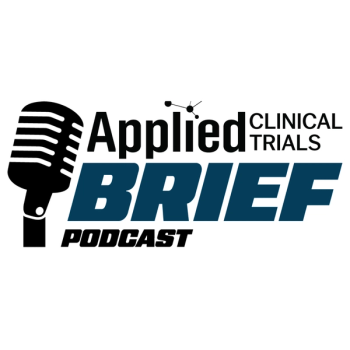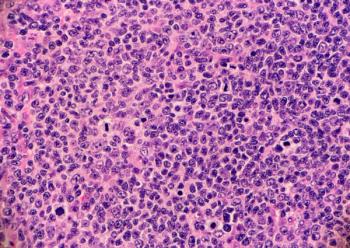Key oversight and CTMS insights
- 57% of clinical executives say they lack clarity on regulatory oversight requirements.
- 75% of Inhibrx Biosciences’ studies are outsourced to CROs—yet managed centrally through CTMS.
- 95%+ of audit readiness achieved when sponsors maintain documented, real-time oversight.
- Daily automated data transfers in CTMS improve visibility and reduce manual workload.
- End-to-end oversight enables faster, more compliant decision-making across growing biotech portfolios.
Imagine that the FDA asks a biotech for documentation of all the people interviewed for a clinical trial, including details on inclusion and exclusion information for each participant. If a trial is outsourced this data typically resides with the contract research organization (CRO). The company can either ask the CRO and hope they send the documents quickly or comb through boxes of paper or 3,000+ row spreadsheets to find the information.
The dilemma illustrates how fragmented communications and data can impact timely study execution. To stay audit-ready and facilitate easier drug submissions to regulatory authorities, biotechs are turning to technology that can capture all activities and communications with quick access to data.
As biotechs scale up, streamlining the planning, execution, and monitoring of outsourced clinical trials becomes critical. While CROs manage the day-to-day operations, sponsors are ultimately responsible for the trial’s integrity, safety, and success. A clinical trial management system (CTMS) can provide simple answers when regulators come calling.
Oversight should not be overlooked
Regulatory guidance, like ICH E8 (R1) and ICH E6 (R3) states that sponsors must maintain oversight of CROs, but the exact definition and scope remain ambiguous. More than half (57%) of clinical executives say they don’t have a good understanding of the requirements to show proper oversight, highlighting an opportunity to develop a better framework.
When asked about the definition of trial oversight in practice, responses varied from maintaining a log of meeting minutes and review dashboards, to tracking metrics, monitoring for critical risk analysis, to having active discussions with CROs. No widely accepted approach exists, leaving biotechs increasingly relying on CROs to maintain compliance.
There is a pressing need to clarify what oversight of CROs entails with guidance on effectively collaborating with partners to manage trials and remain compliant. Developing a comprehensive oversight plan can help emerging biotechs to ensure efficiency, visibility, and accuracy.
Inhibrx Biosciences, a clinical-stage biotech with a lean team is one company centering oversight around CTMS. While 75% of its studies are outsourced to CROs, Bonne Adams, president of operations at Inhibrx, views CTMS as essential. “The CTMS is your base system for setting up all other systems. Study metrics and global contacts all flow from your CTMS to other systems,” Adams explains.
Portfolio management matters
Oversight and portfolio management go hand in hand, and both are particularly important for organizations venturing into their first or second product. Since long-term success can be shaped by how well the first few trials go, understanding and managing the portfolio is especially critical for emerging biotechs.
Organizations conducting their first trials should ask these questions:
- What systems do we have to monitor trial progress, manage trial documents and data, and collaborate with CROs?
- Do we have the resources to manage our current pipeline and scale for the future?
- Are our people, processes, and technology seamlessly connected for successful trial oversight?
With a CTMS, sponsors can track enrollment within the desired timeline and garner insight into the progress of each study and the overall portfolio. Managing a portfolio in an advanced CTMS provides real-time reporting and analysis, which is especially beneficial when a company is managing products in different phases.
Biotechs can also improve portfolio management by using CTMS to see trends and gain insights, driving proactive actions and closer collaboration with CROs. Sponsors can leverage the data to identify issues, such as disproportionate spending or delayed enrollment, for informed study and vendor management.
Regulations make a case for technology
Similar to oversight guidelines in ICH E6 (R3), FDA guidance addresses the use of computerized systems in clinical trials. At its core, the regulatory guidance is designed to ensure the safety of patients and maintain trial integrity. Addressing technology specifically, the FDA is concerned with how “data quality might be satisfied where computerized systems are being used to create, modify, maintain, archive, retrieve, or transmit clinical data.”
Within that framework, a CTMS is a modern solution that enables close monitoring of study activities to confirm trials are following protocols and regulations. Through documentation, such as user tasks, trial master file (TMF) oversight, and research site monitoring visit reports, sponsors have an auditable record of their oversight activities. This is an important asset to satisfy regulatory requirements.
While the use of technology is not required by law, an unprecedented level of detail and data is mandatory to report to regulatory bodies. For biotechs, a common concern is reaching the trial endpoint only to realize the data quality doesn’t meet the required standard.
Advanced features in a CTMS, like automating data transfers between sponsors and CROs daily, can save significant time and effort while increasing visibility into study status. Given today’s evolving regulatory landscape, ensuring every step of the trial contains detailed, documented, and audit-ready data is critical.
End-to-end oversight is possible
Laying a foundation for continuous and real-time oversight is no longer solely motivated by regulatory obligations. Clinical phase biotechs are driving change and innovation in how trials are outsourced to meet accelerated timelines with a small team and limited resources. Given the high cost of conducting clinical trials, oversight delays at any study phase can have significant impacts. By adopting and owning clinical trial solutions, biotechs can identify roadblocks early and adjust strategies to move forward quickly.
Modern process-based systems can support operations for fast-growing companies regardless of whether they run their trials in-house or outsource to CROs. Effective oversight helps ensure trial success, but it hinges on the ability of sponsors to have control of their data. A modern CTMS streamlines processes, simplifies access, and improves decision-making, helping biotechs navigate the complexities of running a clinical trial. Now, when regulators pose questions, they can answer with full confidence in the integrity of their data and documents.
Henry Galio, vice president, Veeva clinical strategy





